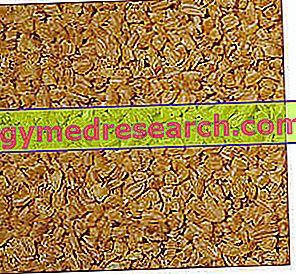What are
What are champignon mushrooms?
Champignon mushrooms are basidiomycete mushrooms that grow spontaneously in the meadows (especially in the pastures), at the margins of crops and in the undergrowth (not too thick).

Champignon mushrooms are very popular and widely consumed foods among the general population. Famous as much as porcini mushrooms and truffles, they are not however equally valuable. Nevertheless, due to their organoleptic and gustatory characteristics of lightness and delicacy, simplicity of use and the relative ease of artificial reproduction, the mushrooms undoubtedly represent the most cultivated type of mushroom - or better, bred - in all of Italy.
Champignon mushrooms, like other mushrooms, do not belong to any of the VII fundamental food groups. They have mostly negligible nutritional properties, with few exceptions such as the low vitamin D mineral zinc content. Champignon mushrooms can be eaten raw or cooked, with the function of main or secondary ingredient, in various recipes included in the groups of: appetizers, first courses, main courses and side dishes.
Champignon can also have contraindications. Many do not know that all fungi produce toxins. Some, as in this case, are harmless to humans; nevertheless, in particular situations, it is advisable to avoid or reduce them significantly. The number of warnings increases if the mushrooms are harvested in the wild rather than coming from official farms.
Of the Agaricaceae family (from the Greek agarikón = field) and Genus Agaricus, there are various species of closely related fungi that are classified into two groups: with yellowing flesh and cuticle and with flesh and cuticle browning. The most well-known and consumed champignon species are:
- A. campestris : small champignon. It is the most widespread. Its mutability has made it possible to differentiate various forms or varieties, for example the squamulosus
- A. arvensis : greater champignon. The color tends to yellowish and the stem is wider at the base
- A. bisporus : it is the real champignon. It has a brown cap, fibrillose and covered with flakes with an enlarged stem at the base
- A. bitorquis : has two separate rings in the stem.
Note : In Italy the term champignon is used as a synonym for champignon. In reality, even if almost no one is aware of this distinction, as we have already specified, the champignon is a particular species of the genus Agaricus .
The term champignon means only one type of edible and good quality mushrooms of the genus Agaricus ( bisporus ). However, there are very similar inedible or even toxic properties (such as A. xanthoderma ). Moreover, in nature you can also find "apparently" similar but very poisonous mushrooms (such as the genus Amanita ).
Nutritional Properties
Nutritional properties of champignons
Mushrooms are not vegetables and are even cataloged in a separate biological kingdom. Not having any specific and irreplaceable nutritional role, mushrooms (therefore also champignons) do not fall into any of the VII fundamental food groups. However this does not mean that they have "completely" negligible properties; we go into detail.
Champignon mushrooms are low in calories; energy is supplied mainly by nitrogen compounds, followed by carbohydrates and to a lesser extent by lipids. Proteins have a low biological value, that is they do not contain all the essential amino acids in the right quantities and proportions - in relation to the human model. Carbohydrates tend to be simple. Among the fatty acids, there is a prevalence of polyunsaturated ones and a minority of saturated ones; monounsaturates are absent.
The fibers, present in abundant quantities, are basically insoluble; they are accompanied by other prebiotic molecules. Champignon mushrooms do not contain cholesterol; they are also totally free of lactose and gluten, while the concentration of histamine is yet to be clarified.
Champignon mushrooms contain a fair concentration of the water-soluble belonging to group B called niacin (vit PP); however, that of the liposoluble called colecalciferol or vitamin D is also appreciable. With regard to mineral salts, the levels of zinc, potassium and phosphorus are appreciated.

Champignon, Bianchi, Crudi | ||
Nutritional values per 100 g | Quantity' | % * |
| Power | 22.0 kcal | - |
Total carbohydrates | 3.26 g | - |
Starch | - g | - |
| Simple sugars | 1.98 g | - |
| fibers | 1.0 g | - |
| Grassi | 0.34 g | - |
| Saturated | 0.05 g | - |
| Monounsaturated | 0.00 g | - |
| polyunsaturated | 0.16 g | - |
| Cholesterol | 0.0 mg | - |
| Protein | 3.09 g | - |
| water | 92.45 g | - |
| Vitamins | ||
| Vitamin A equivalent | 0, 0Âμg | - |
| Beta-Carotene | -μg | - |
| Lutein Zexanthin | -μg | - |
| Vitamin A | 0.0 IU | - |
| Thiamine or vit B1 | 0.081 mg | 7% |
| Riboflavin or vit B2 | 0.402 mg | 34% |
| Niacin or vit PP or vit B3 | 3.607 mg | 24% |
| Pantothenic acid or vit B5 | 1, 497 mg | 30% |
| Pyridoxine or vit B6 | 0.104 mg | 8% |
| folate | 17, 0μg | 4% |
| Vitamin B12 or cobalamin | 0, 04μg | 2% |
| Choline | - mg | - |
| C vitamin | 2.1 mg | 3% |
| Vitamin D | 0, 2μg | 1% |
| Vitamin E | 0.01 mg | - |
| Vitamin K | 0, 0μg | - |
| Minerals | ||
| Football | 3.0 mg | - |
| Iron | 0.5 mg | 4% |
Magnesium | 9.0 mg | 3% |
| Manganese | - mg | - |
| Phosphorus | 86.0 mg | 12% |
| Potassium | 318.0 mg | 7% |
| Sodium | 5.0 mg | - |
| Zinc | 0.52 mg | 5% |
| fluoride | -μg | - |
* The percentages (approximate) refer to the recommended US ration (US) for the adult population.
Diet
Champignon in the diet
Champignons lend themselves to most diets. They do not appear to have contraindications for overweight and metabolic diseases. Quite the contrary, the low energy value, the abundance of fibers, the absence of cholesterol and the neutral lipid profile contribute to making the champignon foods recommended in the diet against: overweight, type 2 diabetes mellitus, hypertriglyceridemia, hypercholesterolemia and hypertension. Note : an exception is made for pickled mushrooms, which are more fatty and caloric than fresh ones. Having an average purine content, they are occasionally allowed and in moderate portions also in the diet for hyperuricemia and gout.
The abundance of fibers and prebiotic components (nourishment for the intestinal bacterial flora) make the champignon mushrooms excellent allies to prevent and treat constipation or constipation. Since the latter also causes hemorrhoids, fissures and increased probability of colon cancer, their relevance is also extended to the prevention of these circumstances. Instead it is advisable to limit them in case of irritable colon, colitis and diarrhea in general.
Instead it would be advisable to avoid large quantities of champignon in the preventive nutritional regime against histamine intolerance. According to some insights, edible mushrooms should not contain histamine; however, yeasts and molds, with which they are closely related, are very rich. According to other sources, then, the mushrooms would be endowed with a potential called histamine the food content of histamine would therefore be harmful in case of intolerance, but rather the capacity to increase it indirectly within the organism. This explains the indecision in recommending or not the mushrooms in the diet against histamine intolerance.
For safety reasons, during pregnancy and lactation they should be avoided in portions and with a too generous consumption frequency (read the dedicated article by clicking here). This recommendation stems above all from the principle that, as anticipated, all fungi produce toxins. Those of the champignon should be harmless to humans but, since it is also "the dose to make poison", particular caution is recommended. In pregnancy it would also be advisable to prefer cooked mushrooms to raw ones, since any toxins of a protein nature are deactivated thanks to heat. Note : especially in these conditions, it is absolutely inadvisable to eat wild mushrooms. First of all because there is always the possibility that these are non-edible, toxic or poisonous species; secondly because wild mushrooms, especially when caught in high-risk areas, can constitute real "reservoirs" of pollutants; for example of ferodo, if taken from the edge of the road, or of pesticides, if found in orchards or in cultivated fields.
Champignons lend themselves to dietary regimes against gluten and lactose intolerance. They have no contraindications for vegetarian, vegan, philosophies and religions of any kind.
The average portion of champignon mushrooms (white hat) is about 100-200 g (20-45 kcal).
Kitchen
Champignon in the kitchen
The young and delicate champignon mushrooms, closed with strips still pink, cut into strips can be eaten raw in salads. This recipe is often associated with rocket and parmesan cheese shavings. The champignon salad with strips, rocket and parmesan, also seasoned with extra virgin olive oil, lemon juice or balsamic vinegar, salt and ground black pepper, is often associated with sliced meat (beef) or fish (tuna). or swordfish) grilled, veal carpaccio, salted meat and sliced bresaola.
Champignon can be cooked in various ways. Cut into pieces you can sauté in a pan with oil, garlic, salt, ground black pepper and fresh parsley; they are both a side dish and a sauce for pasta dishes based on dry pasta or polenta. They are excellent in risotto, on pizza (at the entrance or at the exit) or in the stuffed calzone.
Champignons can also be baked (hats filled with flavored breadcrumbs and chopped stems), grilled or grilled (natural) and fried (simply floured or battered).
On the market, the mushrooms are mainly bred, in a raw, frozen form (mainly in mixed mushrooms) and in oil in a jar.
Oenological combinations, mainly consisting of white wines, change according to the recipe.
Description
Champignon description
Champignons have a thick, scaly hat. Above they are white or brown, depending on the variety of bisporus ; other field mushrooms are ocher colored. The gills, placed under the hat, are white or pink before opening and brown, chocolate-colored, as well as the spores, after hatching. The stem, surrounded by a ring, can be more or less squat depending on the development.
How to recognize them
Recognize a champignon from an amanita
WARNING! We strongly advise against collecting and consuming mushrooms without having followed an adequate training course; moreover, above all at the first experiences, it is necessary to show the mushrooms collected by the competent organs, in order to avoid suffering intoxication or poisoning.
Champignon can be confused with some toxic or poisonous mushrooms. It is necessary to be very careful not to confuse them with fungi of the genus Amanita and species: ovoidae (responsible for the so-called norleucinic syndrome), proxima, strobiliformis and verdognola, which may seem similar to an inexperienced eye.
Compared to the aforementioned members of the genus Amanita and A. xanthoderma, champignons are distinguished by:
- Roselle with closed cap and brown with open cap; the Amanita ovoidae and the greenish are instead provided with completely white lamellas even with the cap open
- Color above the white hat, light brown or pale yellow. The greenish Amanita is instead chrome-yellow. Amanita ovoidae, strobiliformis and proxima instead, unfortunately have the same color as field mushrooms (brown champignon, therefore, can be more easily recognized)
- Stem that does not glow to the touch and to cut, while A. xanthoderma quickly becomes yellow at the base
- Delicate scent of humus and grass. A. xanthoderma, on the other hand, has a typical acrid smell of Indian ink or phenic acid.
Note : the species A. arvensis can be easily recognized because, after having been touched with the fingers, it is stained with yellow and releases a typical anise smell.
Distribution
Where do mushrooms grow?
Champignons are spring, summer and autumn mushrooms, with a different attitude depending on the climate and altitude of the area.
They are terrestrial and grow both in the green fertile meadows of the countryside or in the hilly and mountain pastures, and (but not all species) in woodland spots.
Traditionally considered saprophytic fungi, champignons (or at least some species) can form a symbiotic relationship with herbaceous or arboreal plants.
Did you know that ...
Today the activity of home breeding of mushrooms is progressively expanding. Along with Pleurotus (sbrise or orecchioni), pioppini (or piopparelli) and galletti (or gallinacci), the mushrooms are the most widespread species.



